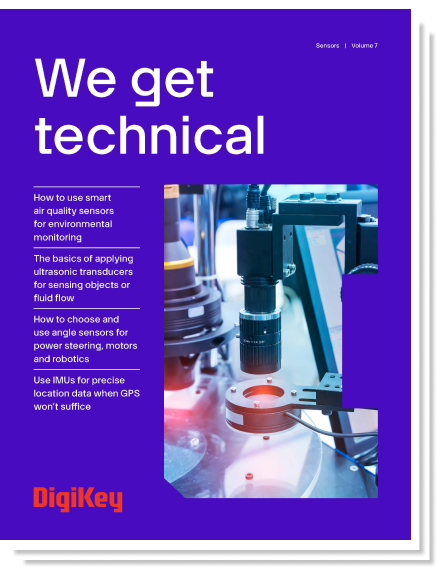Sensors
Volume 7
Recent advancements in sensor hardware and algorithms are transforming industrial and consumer applications, particularly in automated systems, robotics, and digitalization. The widespread adoption of key sensor technologies has been instrumental in fostering innovation across industries. These advancements have enabled the miniaturization, ruggedization, and enhanced connectivity of transducers and processing elements. Moreover, there's a growing trend towards integrated sensing solutions that combine multiple modalities such as angle, speed, and temperature. This integration reduces design complexity and footprint, while also lowering costs.
3D time-of-flight (ToF) imaging exemplifies this trend by integrating optical design, precision timing circuits, and advanced signal processing capabilities. It is tailored for applications in industrial safety, robotic navigation, and gesture-based controls. Advancements in sensors now incorporate wireless communication capabilities, real-time data collection, and sophisticated calibration techniques to achieve higher levels of accuracy. These technologies, complemented by machine-learning algorithms, support predictive maintenance in industrial settings and enable adaptive functionalities in drones and other mobile platforms.
There is a notable shift towards energy-efficient and energy-harvesting sensors, which are increasingly integrated into new applications and upgraded legacy systems. In this magazine, we delve into 10 specific sensor technologies, exploring how they enable scalability, enhance design performance, and facilitate the smart engineering functions crucial for today's evolving needs.
Read now Download PDF
Read Magazine Articles
- Get started quickly with 3D time-of-flight applications
- How to use smart air quality sensors for environmental monitoring
- Understand drone design trade-offs before piling on the sensors
- An introduction to pressure sensors
- The rise of the designators: from DeForest to Western Electric
- The basics of applying ultrasonic transducers for sensing object or fluid flow
- How to choose and use angle sensors for power steering, motors and robotics
- Using a MEMS sensor for vibration monitoring
- Use IMUs for precise location data when GPD won't suffice
- Use a PCR module to rapidly develop accurate, low-power radar-based sensors







